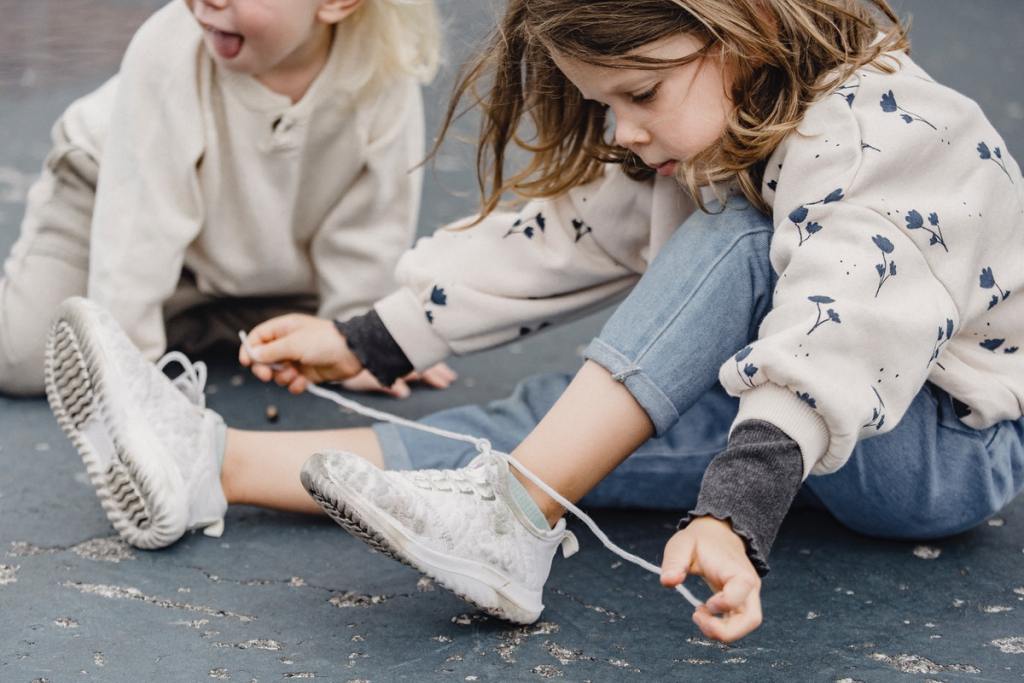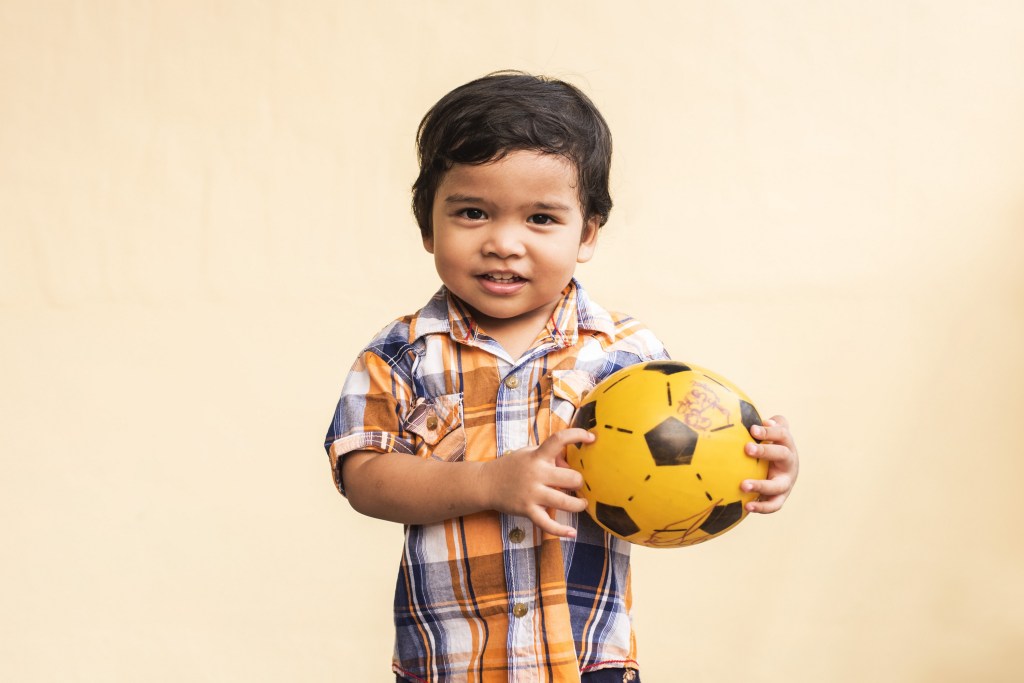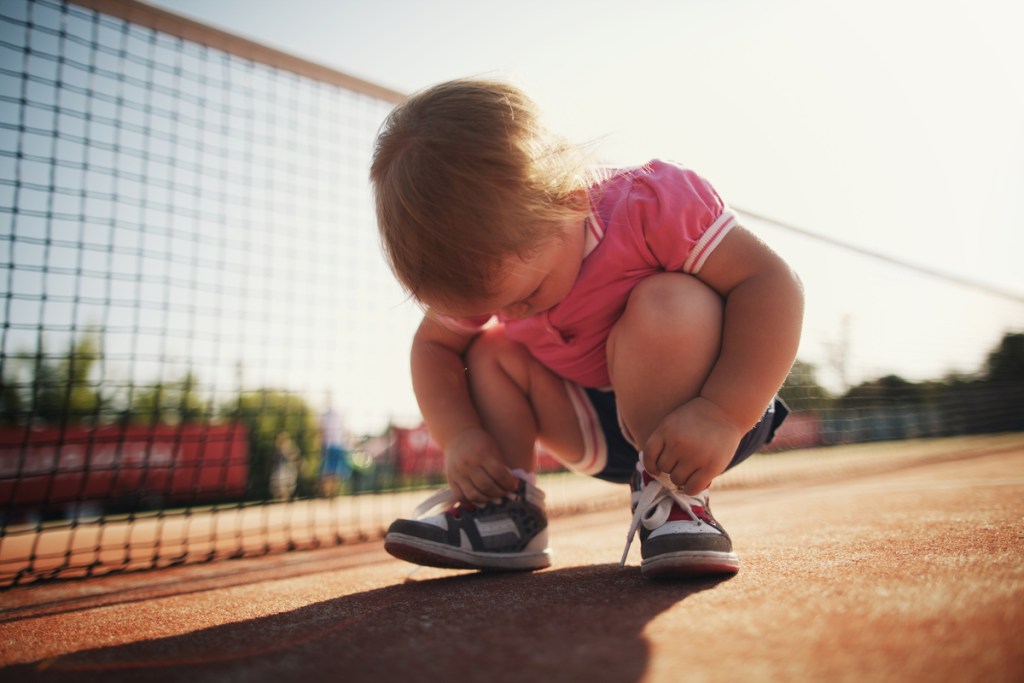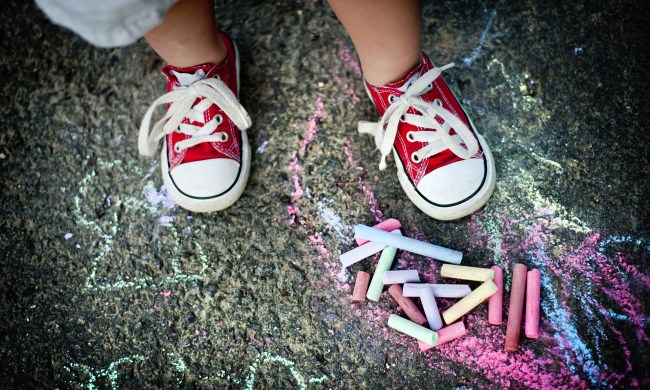Getting your child to tie their shoelaces isn’t always an easy task. Like many milestones, there are no hard and set rules as to when a child will suddenly master this task. While there isn’t a magic number as to when kids should reach the shoe-tying milestone, most children master tying their shoes by first grade, while others may accomplish the task with confidence in second or third grade.
Learning to tie shoes is an important accomplishment that can be difficult for some children. While adults think nothing of double-knotting shoes before heading out the door, the simple action is rather involved. Shoe tying encompasses visual perception skills, hand-eye coordination, and defined fine motor skills. Fine motor skills are the small muscles in the hands and fingers. Shoe tying relies on those fingers to make and pull those bunny ears tightly so shoes don’t quickly become untied.
All the steps are typically why kids get frustrated with the process and opt for Velcro. To help your toddler tie shoes on their own and get on track down the road, it’s important to develop the necessary skills for shoe tying.
Fine motor skills

Getting those fingers working is the best way to get your little one ready to tie shoes. Fine motor skills are used in many everyday activities, from shoe tying to writing letters. So, developing the small muscles in the fingers, wrists, and hands is vital. Thankfully, helping little ones develop their fine motor skills is simple and fun. Any activity getting the hands and fingers working focuses on muscle development. These activities are ideal for a toddler’s fine motor skills.
- Playdough or putty
- Sponge painting
- Finger painting
- Puzzles
- Wooden blocks
- Duplo blocks
- Coloring
- Sand and water toys
Another way to improve your child’s fine motor skills is to get him or her involved in chores around the house. Toddlers love to help, and activities like gardening, cleaning up toys, raking leaves, and even setting the table get their hands and fingers working.
Hand-eye coordination

In addition to fine motor skills, developing hand-eye coordination in your toddler will be an asset down the road when it comes to learning how to tie shoes. Just like fine motor skills, you can help develop hand-eye coordination with playful activities like these.
- Throwing and catching a ball
- Tossing and catching bean bags
- Stringing beads
- Lacing a toy
- Bouncing and catching a ball
- Indoor bowling
Life skill toys

Buttoning, zipping, snapping, buckling, and tying are life skills adults use every day. They’re skills children need to master. Providing toddlers access to life skill toys like a learn-to-dress doll or learn-to-dress boards are a great way to teach kids these important life skills. Dressing toys also work both fine motor skills and hand-eye coordination.
Is my child ready to learn to tie shoes?

Suzy next door is tying her shoes at 4 years old, but Michael up the street is 8 and still can’t tie his sneakers. The fact that children reach the shoe-tying milestone at different ages is perfectly acceptable. The key is to look for readiness. If your child can cut with ease and can button, zip, snap, and lace without too much difficulty, it’s probably time to introduce shoe tying. Another important clue as to readiness is interest. When children are eager to learn to tie and express an interest, start the process.
Avoid frustration

Learning to tie is difficult. If your child is having a hard time with the process and getting frustrated, don’t force it. Simply put it aside for a bit. Keep tying your child’s shoes, but talk your way through it to keep reinforcing the method. Instead of forcing shoe tying, continue to encourage activities to improve fine motor skills and hand-eye coordination.
Step by step

Tying may seem second nature to adults, but to young children, it’s a daunting process. When introducing shoe tying to toddlers and preschoolers, keep it simple. It’s best to break down the process. Focus on one step at a time, allowing your child to master each step before moving on. Set aside a small amount of time each day to practice if the interest level and readiness are there. When you’re running out the door to school, daycare, or practice is not the time for a shoe-tying lesson.
Bunny ears don’t work for everyone

The bunny ear method may be how many parents were taught to tie their shoes, but that method may not work for your child. If it doesn’t, that’s okay. There are alternate methods for learning how to tie, which may be easier for some children. Like most things, there are YouTube videos for that. Watch a few YouTube videos offering up different approaches to shoe tying. You might just hit on a method that works for your little one. If not, keep plugging.
What could difficulties mean?

For some children, tying their shoes will come easily, but for others, it can be more difficult. Because tying shoes requires focus, especially when learning a new task, as well as hand-eye coordination, some children with ADHD or those with Autism Spectrum Disorder may need more time and extra help to master this skill.
If your child is struggling with tying their shoes, don’t get frustrated. Be patient and experiment with different methods, and consider a kit like this one to help them. If their struggle persists, you may want to reach out to an occupational therapist to learn some different techniques.
“Practice makes perfect” is an old adage, but it’s certainly true when it comes to teaching a child to tie shoes. When your child is ready, it will take a lot of practice before he or she is a shoe-tying whiz. The best thing parents can do to get their toddlers on the road to tying their shoes is to develop fine motor skills and hand-eye coordination through fun activities like the ones outlined above. When these skills are strong and interest is high, children will have an easier time learning to tie shoes.




